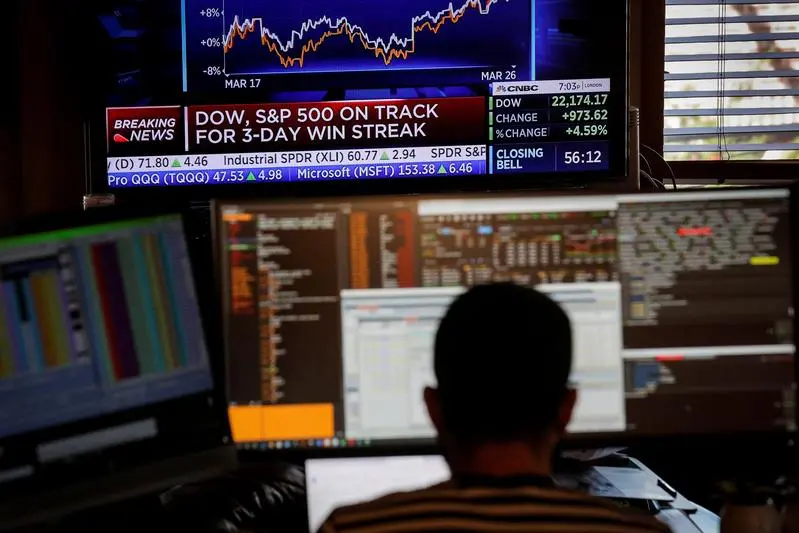PHOTO
NEW YORK - An impasse in U.S. stimulus negotiations and mixed corporate earnings reports in Europe pushed global equities lower and sent investors into perceived safe-haven assets like government bonds and gold, which hovered near record highs.
Senate Republicans announced on Monday a $1 trillion coronavirus aid package hammered out with the White House, which Senate Majority Leader Mitch McConnell touted as a "tailored and targeted" plan to reopen schools and businesses.
But the proposal sparked immediate opposition from both Democrats, who called it too limited compared with their $3 trillion proposal that passed the House of Representatives in May, and some Republicans who called it too expensive.
Enhanced unemployment benefits expire on Friday, which would be a blow to household incomes and spending power.
Some 30 million Americans are out of work and states are tightening lockdown restrictions again, a trend that has also dragged on the U.S. dollar.
Alan Ruskin, head of G10 strategy at Deutsche Bank, noted currencies had been tracking the relative performance of their economies, so that high-ranked economic performance was associated with stronger currencies.
"One clear pattern is how economies linked most tightly to China -- including commodity producers as diverse as Australia, Chile and Brazil -- have tended to perform better than economies most directly linked to the U.S., notably its NAFTA trading partners," said Ruskin.
MSCI's gauge of stocks across the globe shed 0.08% following modest declines in Asia and Europe, where disappointing earnings results from luxury good makers weighed on investor sentiment.
In morning trading on Wall Street, the Dow Jones Industrial Average fell 86.85 points, or 0.33%, to 26,497.92, the S&P 500 lost 3.82 points, or 0.12%, to 3,235.59 and the Nasdaq Composite dropped 30.13 points, or 0.29%, to 10,506.14.
The rest of the week will see 179 S&P 500 companies reporting second-quarter earnings, including Google, Amazon and Apple.
Spot gold dropped 0.2% to $1,937.49 an ounce. U.S. gold futures gained 0.03% to $1,931.50 an ounce.
Gold is still up over $125 in little more than a week as investors bet the Federal Reserve will reaffirm its super- accommodative policies at its meeting this week, and perhaps signal a tolerance for higher inflation in the long run.
"Fed officials have made clear that they will be making their forward guidance more dovish and outcome-based soon," wrote analysts at TD Securities. "The chairman is likely to continue the process of prepping markets for changes when he speaks at his press conference."
The dollar has been falling almost across the board for a month. It reached a two-year low against a basket of currencies at 93.416 overnight before recovering to 93.975.
The euro dropped back to $1.1715 after rising to its highest in two years at $1.1781. The dollar had touched its lowest against the Swiss franc since mid-2015. It also fell to a four-month low of 105.10 against the Japanese yen before squatting at 105.25.
Benchmark 10-year notes last rose 5/32 in price to yield 0.5921%, from 0.609% late on Monday.
Oil prices were mixed as investors weighed hopes for a U.S. stimulus package with declining demand.
U.S. crude recently fell 0.94% to $41.21 per barrel and Brent was at $43.36, down 0.12% on the day.
(Reporting by David Randall; Editing by Bernadette Baum) ((David.Randall@thomsonreuters.com; 646-223-6607; Reuters Messaging: david.randall.thomsonreuters.com@reuters.net))












